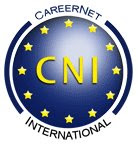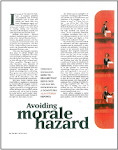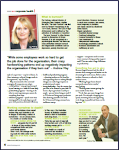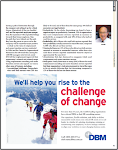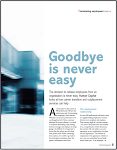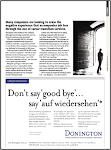.png) A personal brand is unique to each individual and reflects the notion that success comes from self-packaging. Personal branding often involves the application of one's name to various products. But how does this work for job seekers? Well you are your own personal brand which must be vigorously promoted! This can be achieved through the creation of profiles on social networking sites such as MySpace, Facebook or Linked In or creating your own promotional website using your name as the domain name.
A personal brand is unique to each individual and reflects the notion that success comes from self-packaging. Personal branding often involves the application of one's name to various products. But how does this work for job seekers? Well you are your own personal brand which must be vigorously promoted! This can be achieved through the creation of profiles on social networking sites such as MySpace, Facebook or Linked In or creating your own promotional website using your name as the domain name. So why is it important?
No matter your status within the business world personal branding is absolutely vital to your success. After all, an abundant number of others may have your job title, but only a few might share your vision and appreciate the particular talents you offer. If you connect with the individuals and companies that value your “mission” in the world, you will have a much greater chance for success. There is no full-proof path for building a personal brand, but you can take steps that will help you create the best personal brand for you.
A personal brand is a holistic look at your goals, passions and values and how those work to enhance what you offer. Your personal brand relies on the reputation you are able to build around its unique promise of value and in turn what you ultimately deliver. As a result, authenticity and honesty become the most significant building blocks for your personal brand.
It is important to remember that the information you post or upload is publically representing yourself and many employers and recruiters research prospective candidates online to receive more information before an interview or offer is extended.
Our top 5 sourced tips to building a successful plan:
1. First, you need to create a branding plan for yourself. Start by evaluating what your current reputation is and compare it to what you’d like it to be. Then identify qualities that make you unique and how they might be valued by an employer. Helpful hint: Examining who or what you don’t want your personal brand to be like can reveal what you do want. Just flip these negative qualities around to find the positive.
2. While you’re brainstorming your personal brand, it is helpful to write everything down. You will want to create a statement that encapsulates everything you want your brand to be. This will be your “personal mission statement.”
3. Once you’ve worked on your brand identity, you need to get input from those around you. Build your own “board of directors” (i.e., mentors, peers, and family) to give you feedback on your branding plan and how you are putting it into action. Branding is ultimately about communicating your identity; thus it is crucial that you know how it is being received by others.
4. The more you are able to distinguish your brand, the more you potentially will be able to find someone to pay you for it. Look at the market and find what it is that you offer better than anyone else. Read the news, websites, newsletters, etc. and find out what the status quo is so you can capitalise on what makes you special.
5. Go to a good search site and enter keywords related to your brand identity. Check out how those sites embody the qualities of your own brand. Note the ways that these sites present themselves and think about how you might do the same for your own brand online.
Remember your personal brand in the workplace is a combination of the product you offer (i.e., your job performance), the values that you embody, and how the two work together to create the “package” that is you.

 Most if not all of us are aware that the way you look when attending an interview contributes to the overall perception of your fit with the company and the role. In support Senior Manager, Megan Alexander states that job interviews are only 50% about technical skills and the other 50% is about whether you fit the company; whether you share the company’s culture, whether you’ll be comfortable in the company’s culture and the way you look will immediately create an impression about whether or not you will fit the organisation.
Most if not all of us are aware that the way you look when attending an interview contributes to the overall perception of your fit with the company and the role. In support Senior Manager, Megan Alexander states that job interviews are only 50% about technical skills and the other 50% is about whether you fit the company; whether you share the company’s culture, whether you’ll be comfortable in the company’s culture and the way you look will immediately create an impression about whether or not you will fit the organisation..png)


.png)





.png)
